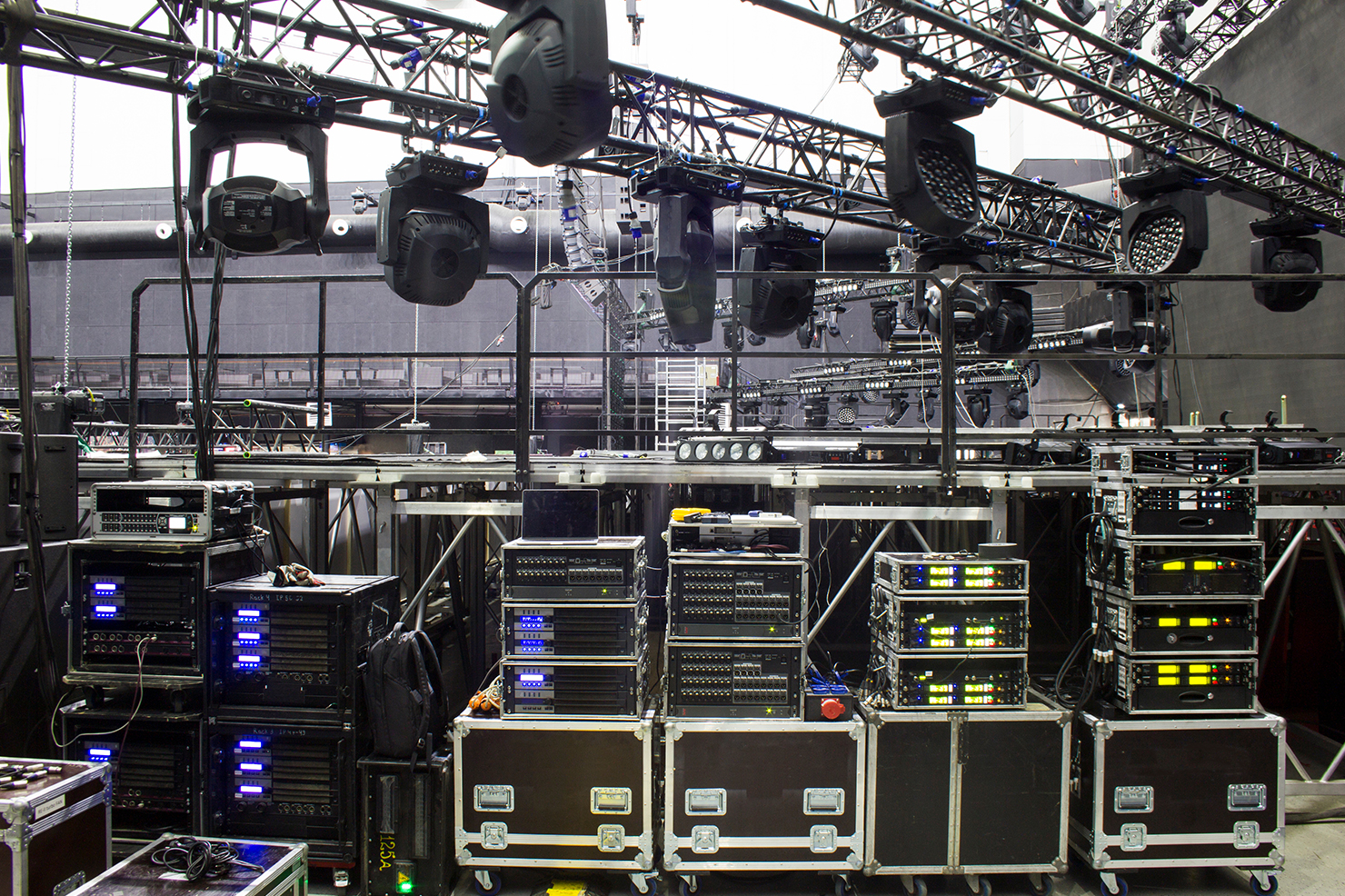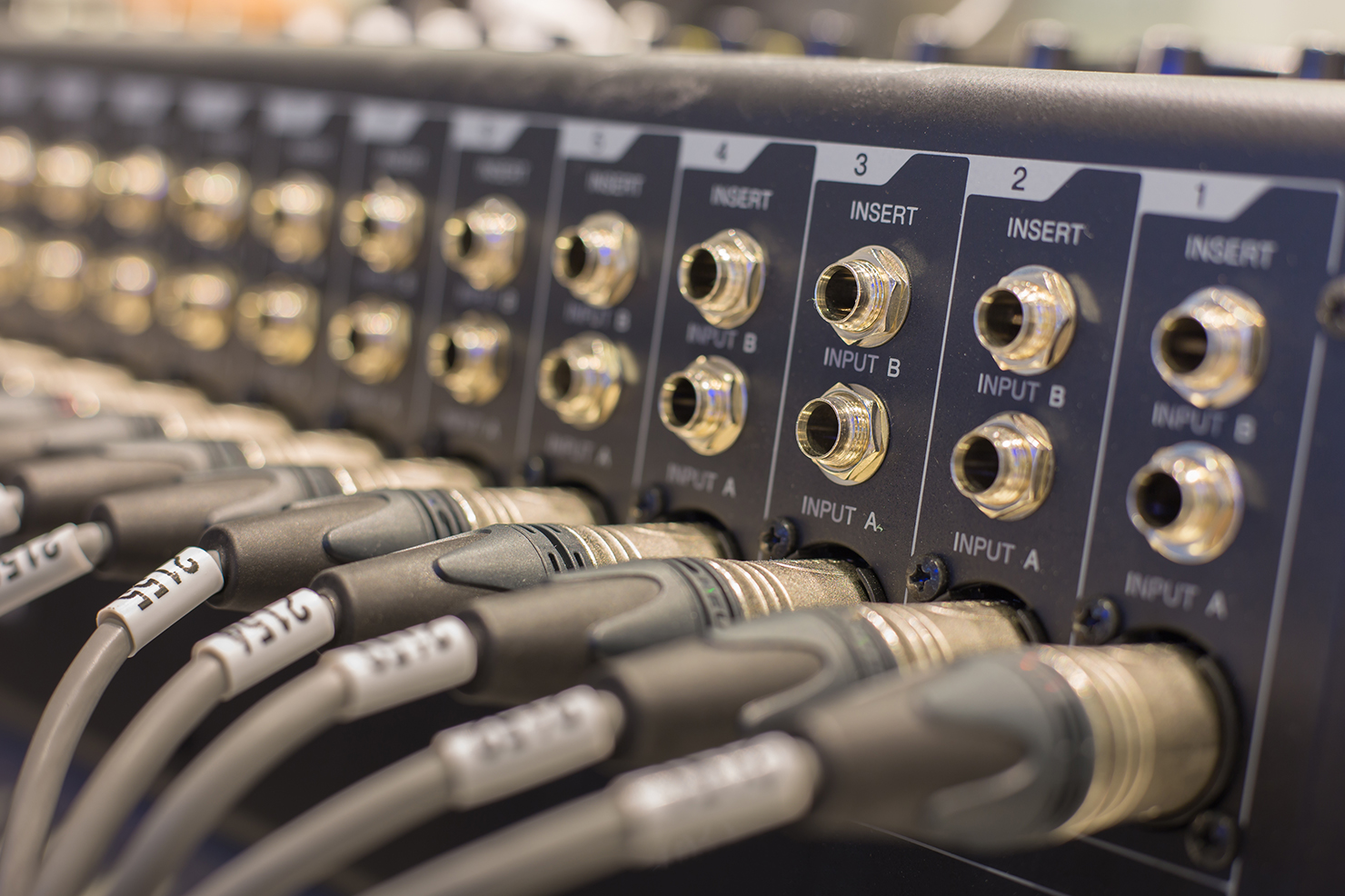If you are hosting an event, regardless of the number of people who will attend or the nature of the event (it can be a concert, a business meeting, seminar presentation, etc.), it will probably be impossible to pull it off without good Audio-Visual (A/V) Equipment. This article will present the A/V Basics to help you navigate this ever-expanding business area.

What is A/V Equipment?
A/V equipment is all electronic media devices that feature audio (sound) and visual (sight) components. They are primarily used in events that include presentations, speeches, music, movies, or anything with audio or graphic elements. Basic A/V equipment is essential in these situations.
The complexity of equipment you use depends on the demands of the event. For example, some events require highly advanced audio-visual equipment (for example, concerts or festivals), while others may be simpler (seminars, meetings, etc.). For more complex events, you may be required to use more complex gear; in that case, the equipment will differ from venue to venue.
Examples of A/V usage are familiar to wider audiences, including slide-tape presentations, movies, TV shows, religious services, live theatrical plays, business conferences, educational exhibits, and seminars. In other words, most events with some audio-visual information transfer depend on the online world; things are much the same. Audiovisual service providers typically provide web streaming, video conferencing, and live broadcasting services.

Using appropriate A/V equipment in an event or presentation brings desirable professionalism with cutting-edge technology. Even if event planners are not skillful in setting all of the A/V equipment requirements, they can rest because vendors and A/V rental specialists are there to help solve any issues. Just make sure you established an early contract and explicitly stated all of your requirements. That way, you will reduce any A/V-induced anxiety and provide a good support network as a base for your event.
Asking your venue for a list of their audio-visual equipment is a great place to start when organizing an event. You may add or remove equipment depending on the event’s particular requirements after you know what AV equipment your venue can offer.
A/V Components
A/V has several vital components, two being the most important: wiring and system control. The third one is proper equipment installation. The system might not work at its best if one of these components is not working correctly, parts are broken, or a fundamental component is missing.
Control refers to the system’s operation and the communication between every installed component. The system components are integrated via system automation devices from manufacturers like RTI, Crestron, Control4, AMX, and others, making the system simple to use from various devices. For instance, a control system with suitable programming may enable a TV in zone one to switch off while music is playing in zone two. However, without correct control programming, the TV in the area one would continue to be on even when the music in zone two is on.

Choosing the correct cable rating is essential based on distance from the main rack, frequency, and fire codes. The A/V technician should hide all cables behind walls and ceiling. The quality of the lines affects the performance of the system. Signals may not transmit smoothly during cabling. The primary component’s wires should be tidily arranged and labeled for quick access.
Who needs A/V Equipment?
Generally, A/V equipment is needed by someone presenting in front of a large audience in a lecture hall or an event space. But they are not necessarily the ones who need in-depth knowledge about all the equipment. Instead, professionals like event planners, audiovisual technicians, and representatives from A/V rental companies who are usually behind the scenes should be adept at managing and using these types of equipment.
Suppose you are a presenter, whether a lecturer, a motivational speaker, a musician, a singer, or even just someone doing the best man’s speech at a wedding, you must know how to use A/V equipment from the frontline perspective. Like where to stand on the stage, how far you should be from the microphone, or how close your instruments or microphones are to the amplifiers to avoid feedback. You will, however, be guided about these things by event planners. An event planner or someone who tinkers with A/V equipment behind the scenes will most likely be someone that a presenter will rely on in case issues arise.

Aside from the individuals mentioned above, other businesses also need A/V equipment for their establishments. Schools, lecture halls, banquet halls, meeting rooms, etc., are great examples. Companies with these establishments might purchase A/V equipment rather than rent them, as it can also be a cost-efficient approach depending on the frequency of use.
A/V Equipment Checklist
When creating a checklist, one vital thing to remember about setting up A/V equipment is to do an ocular inspection of the event location with a trusted A/V technician. Doing this will give you an idea of how much gear you will need. A/V rental companies can also provide estimation services as they have extensive experience in setting up for different types of events.

The number of the equipment listed below may vary depending on the location and how grand the event would be. Event organizers with a more distinctive taste in design might also require fabrication services for podiums and stages, and because of this, fabricated designs are also part of the list.
- Microphones
- Sound System
- Mixer Boards
- Lighting
- Electrical Supply
- Video Cameras
- Computers
- Stages / Podiums
- Projectors / Screens
- Fabricated designs
What is an equipment rental agreement?
More than 80% of American companies lease equipment rather than purchase it, which is often more cost-effective since there will be zero recurring maintenance costs. It also allows the company to focus on more critical tasks such as profit-making, service quality, and client satisfaction.
An equipment rental agreement is a contract between a lessor, the equipment owner, and a lessee renting a piece of equipment. The lessee gets the right to use the equipment in exchange for payment. The lessor retains the equipment ownership and the right to cancel the lease agreement if the lessee violates the contract.

There are different components inside a rental agreement, some contracts are difficult to understand, and some are very straightforward. For example, a standard equipment rental contract would have the following details:
- Contract Agreements – This part states a more in-depth description of the terms and conditions, such as acknowledgment, rental intent, lease duration, payment terms, security deposit, rules in case of damage or alterations, cancellations, violations, and of course, signature between two parties.
- Guidelines for Use – Contains all necessary instructions by the lessor regarding the use of the equipment, including but not limited to logistics, setup instructions, proper handling, etc.
- Equipment Leased – A detailed list of the equipment rented. It includes the A/V equipment and serial numbers, the equipment condition upon rental and return, and possibly the rental cost for each piece of equipment.
